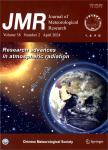Analysis of the Decadal and Interdecadal Variations of the East Asian Winter Monsoon as Simulated by 20 Coupled Models in IPCC AR4
Analysis of the Decadal and Interdecadal Variations of the East Asian Winter Monsoon as Simulated by 20 Coupled Models in IPCC AR4作者机构:Nan-Zhu International Research CenterInstitute of Atmospheric PhysicsChinese Academyof Sciences Climate Change Research CenterChinese Academy of Sciences Graduate University of Chinese Academy of Sciences
出 版 物:《Acta meteorologica Sinica》 (Acta Meteorologica Sinica)
年 卷 期:2012年第26卷第4期
页 面:476-488页
核心收录:
学科分类:07[理学] 0707[理学-海洋科学] 070601[理学-气象学] 0815[工学-水利工程] 0706[理学-大气科学] 0816[工学-测绘科学与技术] 0824[工学-船舶与海洋工程] 0825[工学-航空宇航科学与技术]
基 金:Supported by the National Natural Science Foundation of China(41130103 and 40905041) Knowledge Innovation Program of the Chinese Academy of Sciences(KZCX2-YW-QN202) China Global Change Research Program(2012CB955401)
主 题:IPCC AR4 East Asian winter monsoon interdecadal variations simulation analysis
摘 要:Using the output data of 20 coupled climate models used in IPCC AR4 and observational data from NCEP, the capability of the models to simulate the boreal winter climatology of the East Asian sea level pressure, 850-hPa wind, and surface air temperature; the decadal variations of the East Asian winter mon- soon (EAWM) intensity and EAWM-related circulation, and the interdecadal variations of EAWM-related circulation are systematically evaluated. The results indicate that 16 models can weakly simulate the declin- ing trend of the EAWM in the 1980s. More than half of the models produce relatively reasonable decadal variations of the EAWM-related circulation and the interdecadal differences of EAWM-related circulation between the boreal winters of 1960-1985 and 1986-1998, including the weakened Siberian high, Aleutian low, and East Asian trough, the enhanced Arctic oscillation and North Pacific oscillation, and a deepened polar vortex. It is found that the performance of the multi-selected-model ensemble in reproducing the spatial dis- tribution of the variations is encouraging, although the variational amplitudes are generally smaller than the observations. In addition, it is found that BCCR-BCM2.0, CGCM3.1-T63, CNRM-CM3, CSIRO-MK3.0, GISS-ER, INM-CM3.0, and MRI-CGCM2.3.2 perform well in every aspect.



